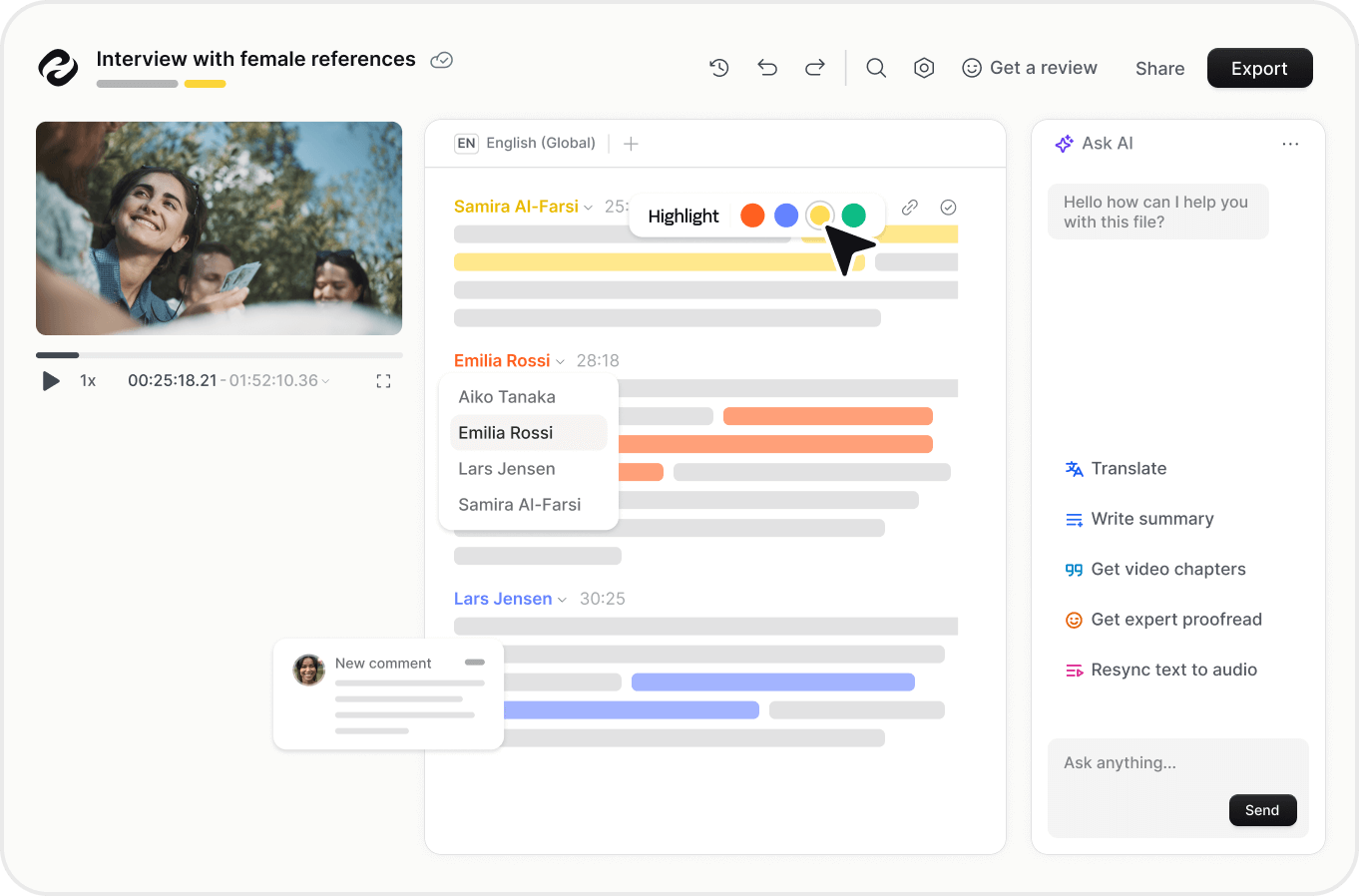1. Upload your interview recording.
With our uploader, you can import your file from anywhere, whether it's on your laptop, Google Drive, Youtube, or Dropbox. The first 10 minutes are free and there's no file limit.
HappyScribe has the latest automatic transcription technology and the best professional transcribers to transcribe your interviews with the best quality in the market.
Below is the list of popular languages we support for transcription and subtitles.
See all languages ▸ Get StartedWith our uploader, you can import your file from anywhere, whether it's on your laptop, Google Drive, Youtube, or Dropbox. The first 10 minutes are free and there's no file limit.
We support more than 120 languages, dialects, and accents.
Our automatic transcription software is lightning fast and 85% accurate. With our human service, your interview transcript will be transcribed and proofread by an expert and native speaker and delivered with 99% accuracy.
Our automatic transcription software will convert your interview to text in just a few minutes (depending on the length of your file). If you select our human service, your interview transcript will be ready within 24 hours.
You can export to TXT, DOCX, PDF, HTML, and many more. It's that easy to transcribe an interview!

Absolutely! Interview transcription ensures accuracy in reporting and makes it easier to find story connections between interviewees. Our brain fills in the gaps when it can't hear what an interviewee said, but those words may not be accurate. And skimming and scanning the written words is much faster than streaming hours of audio, making story connections jump off the page.
To get the highest possible accuracy rate when you transcribe interviews to text you need to upload a high-quality audio file. To obtain a high-quality audio file, it is advised that you maintain a consistent recording environment, avoid background noise, use quality microphones, and ensure that speakers talk directly into the microphone and avoid talking over one another.
Ongoing technological advances continue to improve the accuracy rate of automatic transcription. Depending on the audio quality, speaker accents, and technical jargon, our automatic transcription software can achieve up to 85% accuracy. And with the help of our professional transcribers, your transcripts can be 99% accurate.
An interview transcription is a written record of a spoken interview, converting video or audio into text.
Transcriptions can vary: verbatim transcription (captures every word and it is usually done with automatic transcription), edited transcription (without fillers, small talk...) and summary transcription (no word-for-word accuracy needed). Software like HappyScribe allows companies, journalists, researchers and HR specialists to find the type of transcription that better suits their needs.
Yes, AI can produce interview transcriptions. Different softwares transcribe audio and video to text, using automatic speech recognition (ASR) to convert spoken words into written text. The main aspects to keep in mind when choosing an AI transcription software are: accuracy, speed, languages, integrations with other tools and cost.
Transcribing an interview using automatic AI-powered tools is easy. You just need to upload your interview file to an AI-based software for interview transcription, like HappyScribe. HappyScribe and other transcription tools support common audio and video formats like mp3, wav, mp4, m4a and many others. Then, you just need to click on automatic transcription and wait for a few minutes to get your interview transcription. The process may need more time for longer files.
Software for interview transcription